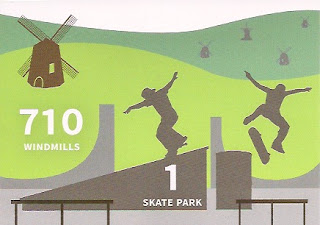In case you are wondering what the BoH and World Cup have to do with St Albans, well, the first doesn't specifically of course, but there was another event fifty years ago which connects with the World Cup and was specifically do do with St Albans and with a specific city in Germany. That country is key, because of the team England was playing in that rather special game of football.
To start at the beginning – or maybe it should be the end; a group of people living in St Albans at the end of the Second World War heard from friends returning from the industrial city of Duisburg on the River Ruhr, Germany, about the dreadful conditions a large proportion of families were enduring. They were holed up in basements, or the remains of bombed out buildings, with meagre supplies of firewood, food and clothing, and many suffering seriously deteriorating health. Volunteers in St Albans collected clothing, food and simple medical supplies, and several lorry loads were taken across land to Duisburg, gifts which would be most welcome in winter. The exercise was repeated for two more years at least.
 |
| St Albans meets Duisburg and its mayor at Duisburg, Germany July 1966. |
The organisers were not to know who would be playing in the World Cup in the summer of 1966, and the visit of St Albans young people to Duisburg was planned ahead as usual. We were already staying with our hosts when the teams playing in the final became known. No visits were planned on Final day and we spent the day and evening with our host families. For some the atmosphere was a little tense. In my host's house there was a gathering of a number of my host's relatives and friends, and the atmosphere was relaxed. Food and drink were prepared and I had the distinct feeling the spread was for an expected victory.
In a large and crowded sitting room everyone sat where they could; I sat on the carpeted floor, leaning against the arm of a settee. There was much animated excitement throughout the match, and part way through the second half, realising I was the only Brit in the place, I did the unpatriotic thing and in my head I hoped Germany would win (I thought that might be the safer option). But that goal at the match's conclusion which secured a win for England against Germany, taught me something wonderful. Instead of a ribbing, even in jest, every one of the fifteen or so family members in the room shook my hand and said, either in German or English "Well done".
I know that not every one of our party had the same positive experience in the homes in which they were staying, but it was a very uplifting experience for me. A St Albans east end 22-year old had an experience that day which was more that just a result in a rather important football match.



